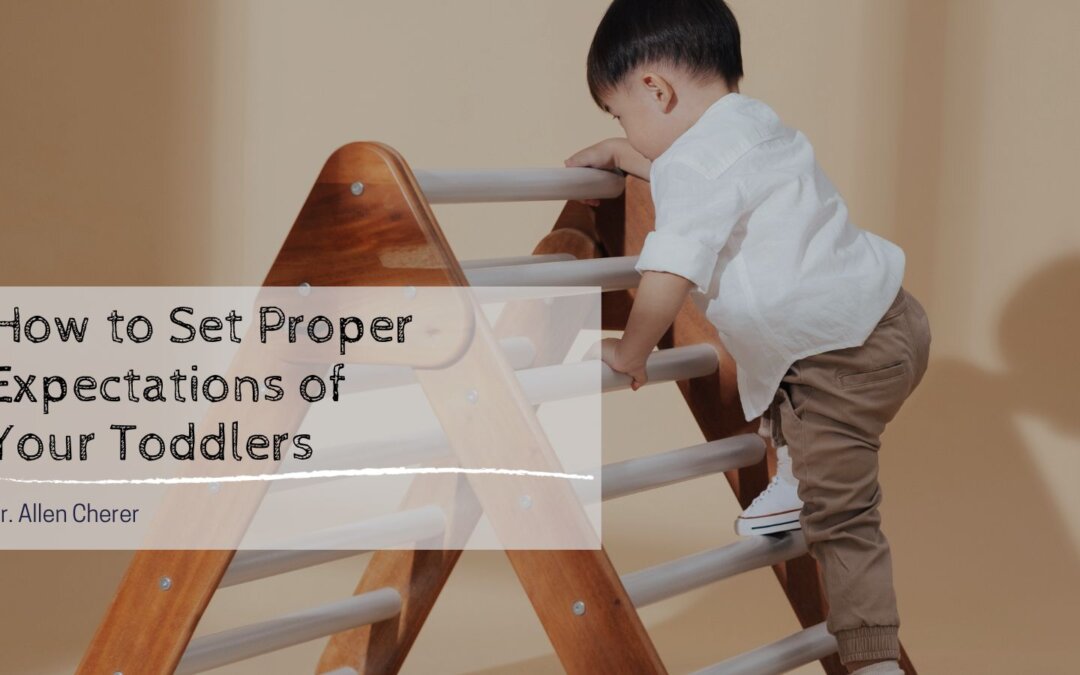Raising toddlers is like nurturing a garden with an unpredictable climate – every day brings new growth, surprises, and a fair share of challenges. Understanding how to set proper expectations for your toddlers is not just about managing their behavior, but it’s also about fostering a nurturing environment where they can thrive and learn. It requires a balanced approach where guidance meets patience and structure meets flexibility. As parents or caregivers, knowing how to temper your expectations can help prevent frustration and promote a positive developmental atmosphere.
The toddler years are a period of rapid development and discovery. It is during this formative time that children begin to understand the world around them and their place within it. They test boundaries and express their newfound sense of autonomy. However, these years are also marked by limited self-control and a still-developing understanding of cause and effect. Toddlers learn through exploration and often do not have the capacity for the self-regulation that adults might expect from older children.
For parents, this stage presents a unique set of challenges: how to mold behaviors without stifling curiosity, how to encourage independence while maintaining control, and how to teach right from wrong with a compassionate hand. Moreover, societal pressures and unrealistic standards often exaggerate these challenges, creating potential conflicts and misunderstandings. Therefore, a deep understanding of toddler development is essential for setting proper expectations that align with their cognitive, emotional, and physical abilities.
Understand Developmental Milestones
The cornerstone of setting proper expectations for toddlers is understanding their developmental milestones. Children typically progress through predictable stages encompassing cognitive, linguistic, emotional, and motor skills. For instance, while a 2-year-old may follow simple two-step instructions, expecting the same child to control impulses like not touching a hot stove without constant reminders is unrealistic.
Parents should familiarize themselves with these milestones by consulting pediatricians or reputable child development resources. Expectations should then be tailored to what children of their age can reasonably manage. If a toddler has just begun articulating needs through words, expecting them to share toys without guidance or prompting will likely lead to frustration. Recognizing what behaviors are developmentally appropriate is critical to setting expectations that your child can meet, which in turn fosters a sense of achievement and self-esteem in them.
Consistency and Routine
Consistency is vital in setting expectations for toddlers. A stable routine gives them a sense of security and helps them understand what is expected. If bedtime is at the same time each night, a toddler learns to anticipate and accept this as part of their daily rhythm. This does not mean rigidity; flexibility is essential, but the underlying framework should be constant.
Establishing routines around meals, sleep, and play can help set clear expectations. If a child knows that after playtime comes clean-up time, they are less likely to resist this transition. It’s crucial, however, that these routines are not just imposed but also explained. Walking your toddler through their day’s structure and talking them through transitions can help them feel involved and more willing to cooperate.
It’s also important to model the behavior you expect to see. If the expectation is to speak calmly, ensure you are doing the same. Children are astute observers and often mimic the adults around them. Being a consistent role model can significantly influence their behavior and help meet your expectations.
Positive Reinforcement and Communication
Effective communication and positive reinforcement are invaluable tools for setting expectations. Toddlers respond well to positive reinforcement. Praise is more effective than punishment for bad behavior. This approach encourages the repetition of desired behaviors and helps toddlers associate them with positive outcomes.
When communicating expectations, clarity is crucial. Use simple, direct language, and be specific about your desired behavior. Instead of vague instructions like “Be good,” opt for clear directives like “Please put your toys back in the box.” Moreover, acknowledge their feelings and offer them the vocabulary to express themselves. For instance, if a toddler is upset because playtime is over, validate their feelings with “I know you’re sad to stop playing, but it’s dinner time now.”
Remember that setting expectations is not just about directing behavior; it’s about engaging in a dialogue. Listen to your child, allow them to speak, and show respect for their efforts to meet expectations. This two-way communication fosters respect and understanding, which is foundational for a healthy parent-child relationship.
Setting proper expectations for toddlers is a nuanced dance of guidance, patience, and love. It is about striking a balance between providing structure and acknowledging the natural developmental stages of early childhood. When done thoughtfully, it lays down the framework for children to grow into confident individuals with a clear understanding of their boundaries and capabilities.
Understanding developmental milestones, maintaining consistency in routines, and leveraging positive reinforcement and clear communication are the pillars of this process. They serve as the scaffolding upon which a child’s behavior can be molded without dampening their spirit or curiosity.
As parents, we must remember that each child is unique, and what works for one may not work for another. The parenting journey is not about perfection but progress, not about unwavering firmness but flexible strength. By setting appropriate expectations and adapting to the individual needs of our children, we can foster an environment where toddlers feel safe, loved, and encouraged to explore their burgeoning independence.

